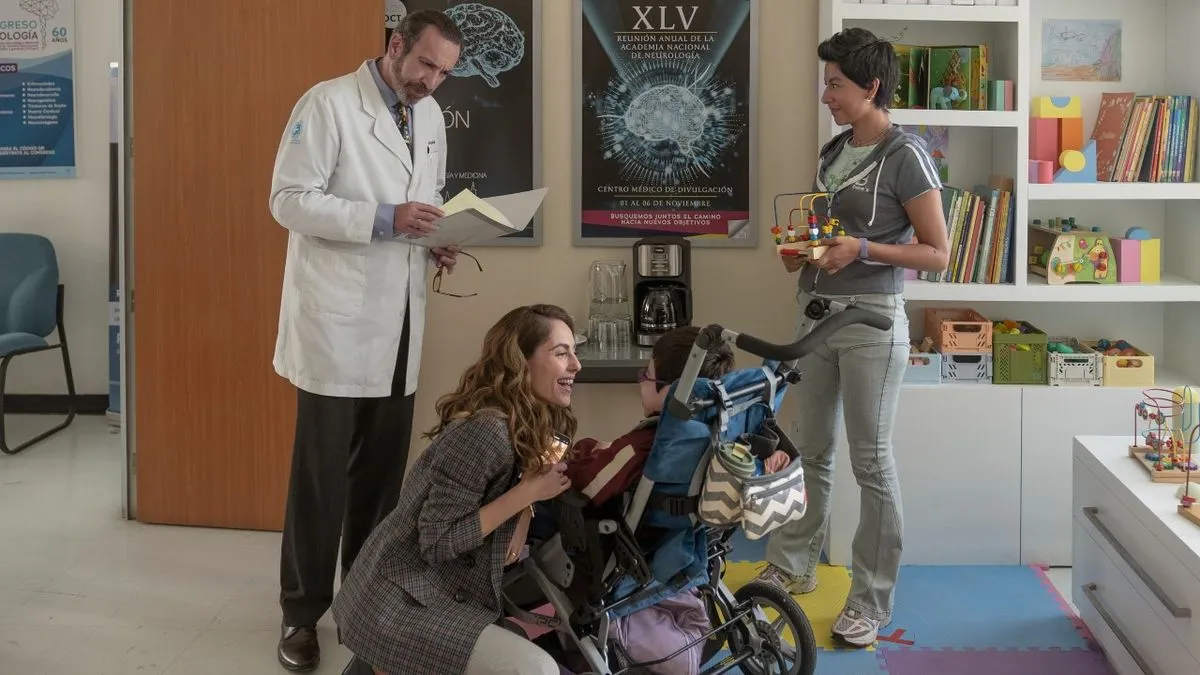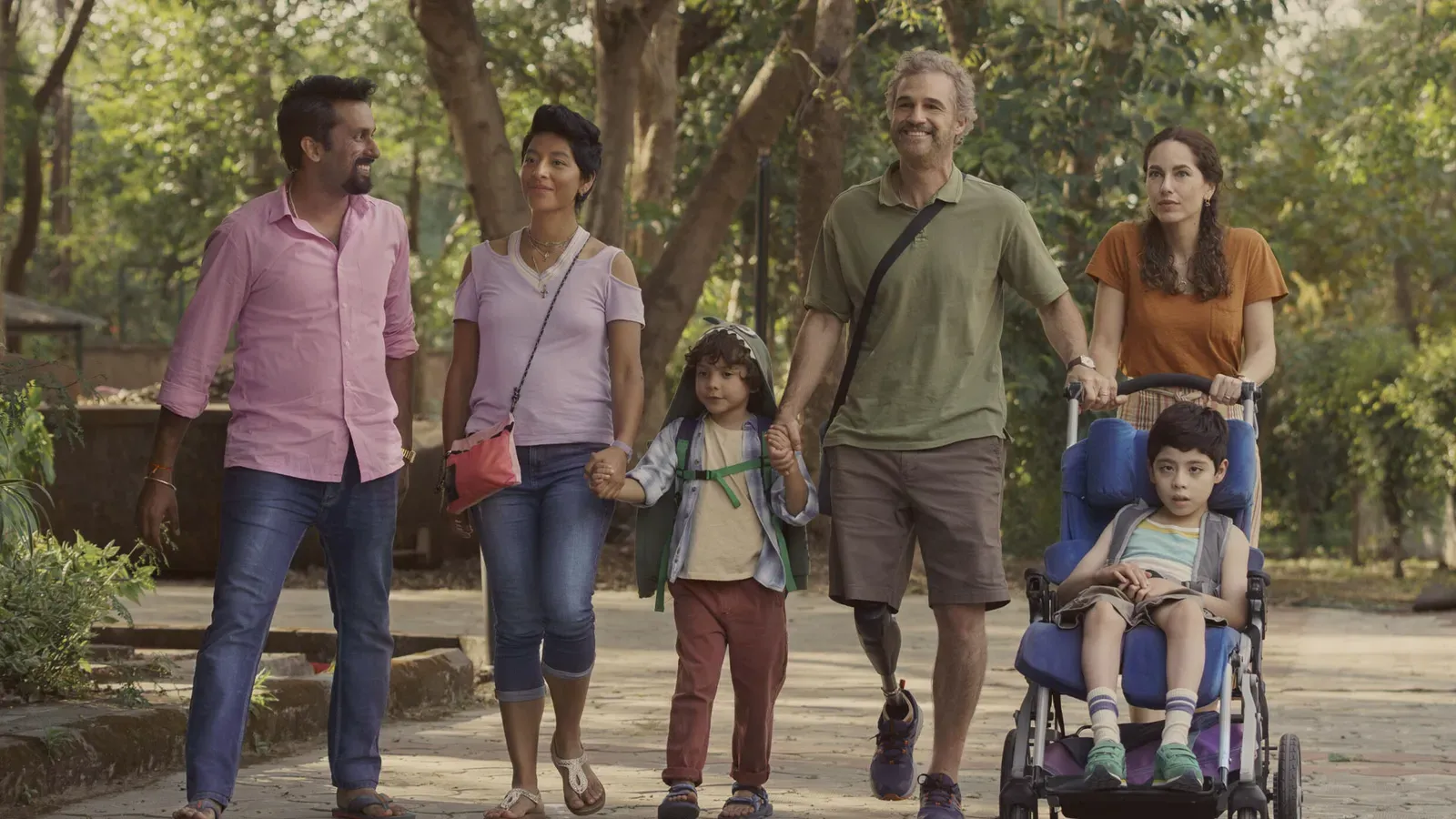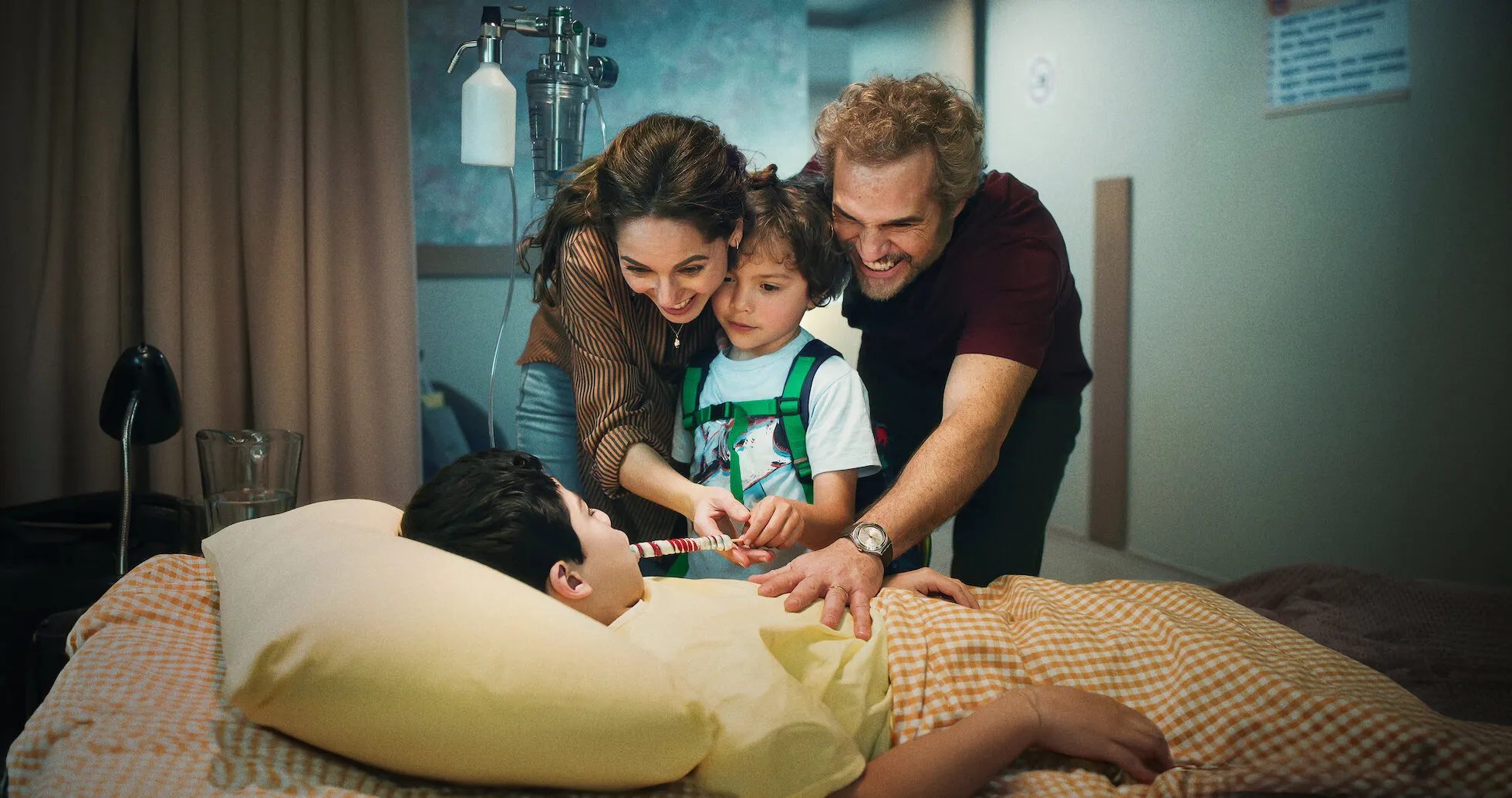Lucca’s World presents a moving portrait of a young boy living with cerebral palsy, anchored by the steadfast commitment of his parents. The narrative unfolds as a real-life inspired account that captures a family’s emotional and financial sacrifices in the quest for a hopeful future. The film offers a snapshot of everyday struggles set against the backdrop of personal determination and fragile hope.
Originating from an autobiographical account, the story maintains a close connection to the authentic experiences of its subjects. This connection not only highlights the specific familial hardships faced but also draws attention to the cultural influences shaping their decisions.
For instance, the film’s depiction of a daring expedition to seek experimental treatment reflects motifs seen in Indian parallel cinema, where realistic portrayals of human endurance mirror challenges that resonate across many cultures. The visual storytelling, marked by thoughtful cinematography and a carefully chosen musical score, complements the narrative with poetic symbolism, reinforcing the emotional terrain that the family must traverse.
As I observe from my perspective in global cinema, the film succeeds in offering a snapshot of life’s fragility while emphasizing a sincere portrayal of unwavering love in the face of severe adversity.
Narrative Threads Across Borders
Lucca’s World structures its narrative with a careful progression that mirrors a tapestry of life’s realities. The film opens with Lucca’s fragile entrance into the world, a portrayal of his early days marked by medical instability and the unmistakable sign of cerebral palsy. This segment captures the vulnerability experienced during the newborn phase, set against the backdrop of raw parental emotions. Early scenes are imbued with a sense of earnest urgency that reflects both familial hope and the weight of unforeseen challenges.
The story moves swiftly from these moments, highlighting a turning point when Lucca’s parents decide to explore treatment options beyond conventional medicine. A pivotal scene emerges when the family commits to traveling overseas, seeking an experimental remedy involving technology reminiscent of the Cytotron. This episode not only shifts the trajectory of the narrative but also introduces an element that echoes innovations found in the realm of Indian independent cinema, where real-life hardships often meet inventive storytelling.
Complementary subplots add depth as the film casts light on evolving family relations and the persistent strain of financial insecurity. These narrative layers unfold in parallel with Lucca’s medical battles. There is a palpable tension in scenes where the routine of daily care intersects with moments of fragile hope; each small victory—be it a subtle physical improvement or a shift in a parent’s expression—marks a significant narrative achievement. The interplay between these intimate moments and grand decisions provides a nuanced examination of personal sacrifice and the endurance of familial bonds.
The film deploys visual and auditory cues to capture fleeting emotions. Close-up shots underscore internal conflicts, while measured editing sequences punctuate periods of uncertainty and resolve. A recurring use of minimalist voiceovers offers additional insight into the characters’ inner worlds, creating a dialogue between on-screen events and internal sentiments. Such techniques draw a parallel with elements observed in parallel cinema from India, wherein realism is conveyed through understated yet powerful techniques.
Family Portrait in Focus: Human Emotions Unfold
In Lucca’s World, the character of young Lucca emerges as a study in quiet strength and gentle vulnerability. The film communicates his condition through soft expressions and measured movements. His limited ability to communicate accentuates the visual cues—the hesitant grasp of a toy, the faint smile during a moment of play—that speak volumes about his inner world. Each brief instance of physical progress, such as taking tentative steps or engaging with simple games, carries a weight of hope and persistence, inviting viewers to reflect on the delicate balance between fragility and determination.
Bárbara’s portrayal of the mother is equally compelling. She faces the daunting challenges of caring for her child with unwavering determination. Her relentless search for solutions is evident in the scenes where she pores over medical reports and consults with experts about experimental treatments.
The camera captures subtle shifts in her demeanor—a fleeting look of worry or a determined set to her jaw—that reveal the heavy burden of self-blame and responsibility. Her quiet resolve in moments of crisis and her tireless commitment to her son cast her as the emotional heart of the narrative.
Andrés, the father, provides a contrasting counterpart. His role is marked by a steady, calculated support that tempers the emotional tumult around him. His measured caution and reflective silence during family discussions often highlight the strain of financial and emotional pressures. In intimate scenes, his careful gaze and reserved gestures illuminate the quiet sacrifices made to keep the family grounded.
Supporting characters add further nuance. Bruno, Lucca’s sibling, contributes a youthful brightness and occasional levity that eases the tension of the heavier moments. Interactions in shared domestic spaces—be it a softly lit kitchen or a modest hospital waiting area—reveal a network of relationships defined by warmth and shared hardship, capturing an authentic picture of everyday family life.
Visual and Thematic Resonances in Global Cinema
Lucca’s World places a strong emphasis on the bond of parental devotion, a concept that moves the narrative forward with clear force. The sacrifices made by Lucca’s family appear in every frame. Financial difficulties, together with the emotional strain of caring for a child with special needs, are shown through intimate scenes where everyday moments carry deep significance. The film’s approach mirrors a tradition seen in Indian parallel cinema, where real-life struggles are etched into the visual language of the screen.
A central symbol in the film is the experimental treatment involving the Cytotron. This device serves as a sign of hope yet also reflects the limitations inherent in modern science. In sequences where the family considers traveling overseas for this medical option, the treatment becomes a metaphor that questions the promises of technology when they meet human fragility and limited resources. The use of this symbol connects the film to global discussions on medical innovation and the disparities in healthcare access, a subject relevant to audiences worldwide.
The visual motifs throughout the film include scenes of travel and stark contrasts between different settings. For instance, brightly lit moments inside the family home contrast sharply with more somber, shadowed sequences in hospital settings. This juxtaposition reinforces the internal and external struggles the family faces. The camera frequently holds on images of train stations and airport terminals, emphasizing not only the physical journey but also the emotional and societal hurdles encountered along the way.
The narrative also touches on the costs involved in the pursuit of advanced treatments. The portrayal of bureaucratic and economic obstacles speaks to global discussions about the intersection of medicine, technology, and human need. Small, poignant details—like the soft strains of a hopeful musical score or a measured cut between two critical scenes—add a layer of authenticity and emotional insight that speaks to audiences from diverse cultural backgrounds.
Cinematic Craftsmanship Across Continents
The director’s approach in Lucca’s World sets the tone through a careful mix of intimate and expansive visual storytelling. The film presents moments of quiet reflection using close-up shots that capture the tension in a parent’s gaze or the fragile smile of young Lucca. These detailed shots offer insight into the characters’ inner states, while wider views establish the broader settings—homes filled with modest warmth, sterile hospital corridors, and busy international locales—that frame the narrative.
The visual pacing is measured by deliberate scene compositions that emphasize the contrast between personal hardship and the promise of hope. In scenes where natural light floods through a window in the family’s living room, the choice of warm lighting underlines moments of reassurance.
In contrast, cooler tones mark the more challenging periods, highlighting the physical and emotional coldness that sometimes surrounds them. The deliberate selection of colors contributes to a subtle yet effective symbolic language, reminiscent of techniques seen in Indian independent films that capture everyday reality with honesty.
The technical execution further enriches the experience. A carefully paced voiceover provides a reflective layer without overwhelming the visuals, offering brief insights into the characters’ unspoken thoughts. The editing favors smooth transitions between moments of high emotion and scenes of quiet contemplation, constructing a narrative that maintains a consistent and touching rhythm. These stylistic choices not only enhance the film’s emotional impact but also draw parallels with influential cinematic trends in both Bollywood and international filmmaking.
Whispered Truths: Dialogue and Emotional Expression
The script of Lucca’s World delicately blends moments of soft exposition with everyday exchanges that invite a close look at the characters’ inner lives. The dialogue, at times spare and simple, forms a gentle current that carries the viewer through quiet yet powerful scenes. In many instances, a brief word or a meaningful pause speaks volumes about the characters’ unspoken emotions, making the narrative feel intimately real and relatable.
The interplay between scripted lines and silent exchanges is carefully managed. Conversations between family members occur naturally, reflecting both moments of tenderness and subtle conflicts. For instance, the exchange during a shared meal often shifts the focus from spoken words to silent glances and understated expressions, revealing layers of hope and quiet despair. This approach mirrors techniques seen in celebrated Indian cinema, where the use of minimal dialogue enriches the storytelling and captures emotional depth without overt dramatization.
The film’s dialogue not only clarifies the plot but also shines a light on everyday struggles and quiet triumphs. Each interaction, whether marked by warm smiles or thoughtful silences, contributes to a realistic portrayal of familial love and internal struggle, allowing the audience to feel each nuanced moment with genuine empathy.
Resonance Beyond the Screen: A Call for Reflection
Lucca’s World creates an imprint that blends emotional intensity with a realistic portrayal of life’s trials. The film presents a narrative that intertwines personal sacrifice with broader social concerns. Its exploration of a family’s struggle against health and financial challenges makes the viewer reassess preconceptions about disability and medical innovation.
The portrayal of deep parental devotion shines through as a constant force within the film. Moments of quiet determination, such as the meticulous preparation for overseas treatment, remind the audience of the sacrifices involved in seeking better prospects. The portrayal of experimental medical treatments, represented by the technological device on screen, serves as a symbol of hope while questioning the reach of modern science.
Scenes set in a modest home, contrasted with those in sterile clinical spaces and bustling cityscapes, offer a visual narrative that enhances the discussion of social and medical realities. The interplay between personal hardships and systemic challenges invites viewers to consider issues such as the price of advanced healthcare and emotional costs borne by families. This narrative, grounded in intimate family experiences, speaks broadly, inspiring both introspection and empathy.
Full Credits
Director: Mariana Chenillo
Writers: Bárbara Anderson (book), Mariana Chenillo (screenplay), Javier Peñalosa (screenplay)
Producers and Executive Producers: Paulina Albarran, Priscila Doncel Albores, Ximena Castro, Leonardo Cordero, Pravin Khairnar, Rafael Ley, Linda Ramos, Mario Savino, Mónica Vértiz
Cast: Bárbara Mori, Juan Pablo Medina, Sean Burgos, Julián Tello, Bill Rogers, Joe Hernandez, Danish Husain, Ari Brickman, Hernán Mendoza, Alejandra Corman, Samuel Pérez, Abhinav Grover, Guillermo Quintanilla, Diana Mercado Armenta, Paloma Almavar, Bélen Chávez, Tamara Salamonovitz Rivadeo, Steven Destello, Adonay Cabrera, Mai Elissalt
Director of Photography (Cinematographer): Luciano Larobina
Composer: Jacobo Lieberman
The Review
Lucca's World
Lucca’s World delivers a delicate and engaging portrayal of familial dedication amid adversity. Its authentic narrative and refined cinematography capture the emotional essence of a family confronting personal and systemic challenges with quiet bravery. The film’s sincere depiction of sacrifice and the transformative role of love leaves a lasting impact, drawing attention to both intimate struggles and the vast implications of modern healthcare.
PROS
- Authentic portrayal of family challenges
- Emotionally engaging performances
- Impressive visual storytelling
- Effective use of symbolism
- Clear narrative on social and medical issues
CONS
- Some sections may feel slow-paced
- Occasional over-reliance on sentimental cues
- Limited depth for secondary characters
- Predictable narrative moments
- Use of voiceover can interrupt immersion





















































